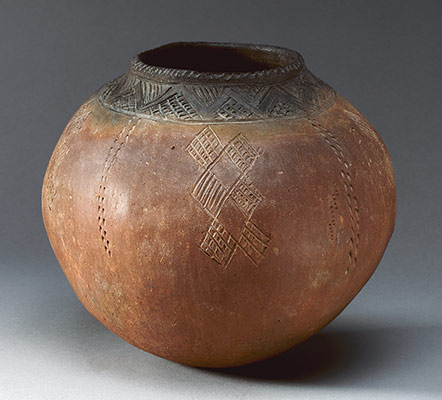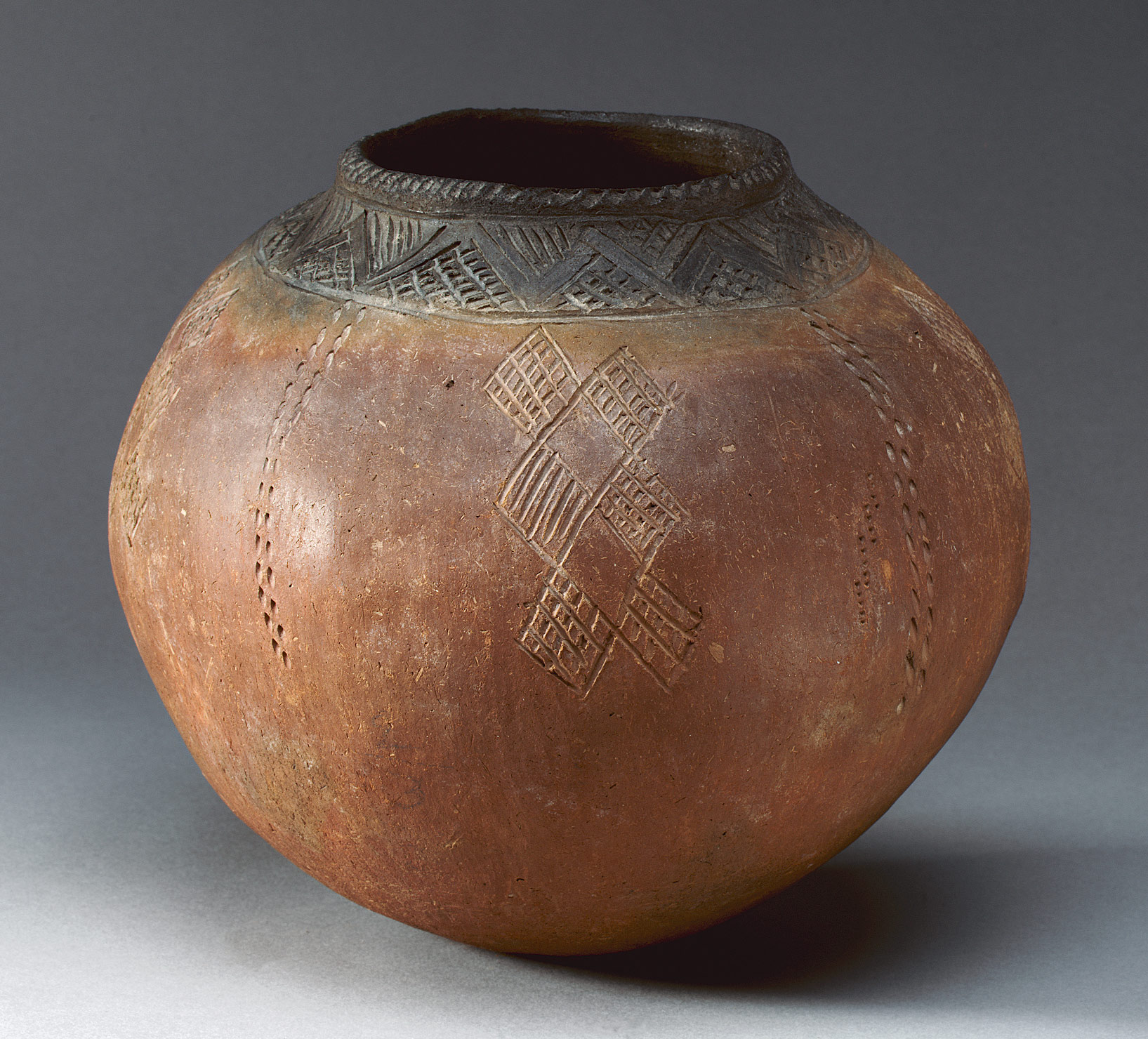Nubia covers an area stretching along the Nile valley from the sixth cataract in the south to the first cataract in the north, which marks the southern border of pharaonic Egypt. The first distinct culture, designated A-Group by modern historians, develops in Lower Nubia between 3700 and 2800 B.C. The A-Group people are eventually ruled by a series of powerful kings and later driven out by the Egyptians.
Sudan, 8000–2000 B.C.
Timeline
8000 B.C.
6500 B.C.
LOWER NUBIA
UPPER NUBIA
SOUTHERN NUBIA
6500 B.C.
5000 B.C.
LOWER NUBIA
UPPER NUBIA
SOUTHERN NUBIA
5000 B.C.
3500 B.C.
LOWER NUBIA
UPPER NUBIA
SOUTHERN NUBIA
3500 B.C.
2000 B.C.
LOWER NUBIA
UPPER NUBIA
SOUTHERN NUBIA
Overview
Key Events
-
ca. 6000–?200 B.C.
Nubia covers an area stretching along the Nile valley from the sixth cataract in the south to the first cataract in the north, which marks the southern border of pharaonic Egypt. Because no Nubian languages are recorded before about the second century B.C., the cultures of ancient Nubia are known primarily through archaeological remains supplemented by ancient Egyptian textual references to places such as Wawat and Kush, and to peoples such as the Nehesyu and the Medjayu. The names given to the different cultures and cultural phases have been assigned by modern archaeologists and historians.
-
ca. 3700–2800 B.C.
(A-Group) A distinct culture, designated A-Group, develops in Lower Nubia in an area from the first to second cataract. The A-Group people produce ceramic figurines, decorated pottery vessels, and a very fine, thin-walled ceramic known as eggshell ware. Trade with Egypt is an important aspect of the economy, with artifacts and raw materials from Upper and Lower Nubia traveling north into Egypt and goods of Egyptian manufacture traveling south into Lower Nubia. Beginning as a politically fragmented population governed by local rulers, the A-Group people eventually seem to be ruled by a series of powerful and very prosperous kings (ca. 3100–2800 B.C.).
-
ca. 2800–2200 B.C.
The A-Group culture is driven out of Lower Nubia by the Egyptians. During this period, Egypt dominates Nubia between the first and third cataracts, conducting periodic raids into Upper Nubia to the south. Egypt’s purpose is to control trade in raw materials and to exploit the rich deposits of stone and gold in the deserts of Lower Nubia. To this end, Egyptian trading and mining settlements are established as early as Egypt’s Dynasty 4 (ca. 2500 B.C.).
-
ca. 2500–2050 B.C.
(Ancient Kerma) As early as 2500 B.C., a united kingdom seems to have developed in Upper Nubia with its capital at the city of Kerma, just south of the third cataract. The kingdom of Kerma, the earliest of the kingdoms of Kush, seems to control the area from the fourth cataract in the south to the rapids of Batn el-Hajar, north of the third cataract. Evidence of the Kerma culture is also found further north in Lower Nubia during Egypt’s First Intermediate Period (ca. 2130–2030 B.C.), when the Egyptians cease to control this area.
-
ca. 2200–1500 B.C.
(C-Group) As Egyptian power weakens, people known as the C-Group culture (descendants of the A-Group) begin to resettle Lower Nubia. They farm the narrow fertile areas beside the Nile, raise cattle, and trade with the Egyptians during Dynasties 8–11 (ca. 2150–1981 B.C.). In Dynasty 12 (ca. 1981–1802 B.C.), Egypt reestablishes control of Lower Nubia by building a series of forts on either side of the second cataract. These forts are intended primarily to protect Egyptian interests against the powerful Kerma kingdom to the south, but also serve to subjugate the C-Group people, who seem to have alternately lived peacefully with and waged war against their Egyptian overlords. Although much of their material culture is Egyptianized, the C-Group people in Lower Nubia continue to produce distinctive forms of fine decorated pottery.
-
Medjayu
In the late Old Kingdom (ca. 2200 B.C.), Egyptian texts document a warlike people called the Medjayu, who live in the eastern deserts of Upper and Lower Nubia. These nomads have alternately peaceful and hostile relations with the more settled populations along the Nile, both in Nubia and Egypt. Highly valued for their military skills, the Medjayu serve as mercenaries in the Egyptian army and desert police force from the late Old Kingdom. The Medjayu, a nomadic people, have left no identifiable archaeological remains earlier than the second millennium B.C.
Citation
“Sudan, 8000–2000 B.C.” In Heilbrunn Timeline of Art History. New York: The Metropolitan Museum of Art, 2000–. http://www.metmuseum.org/toah/ht/?period=02®ion=afs (October 2000)


